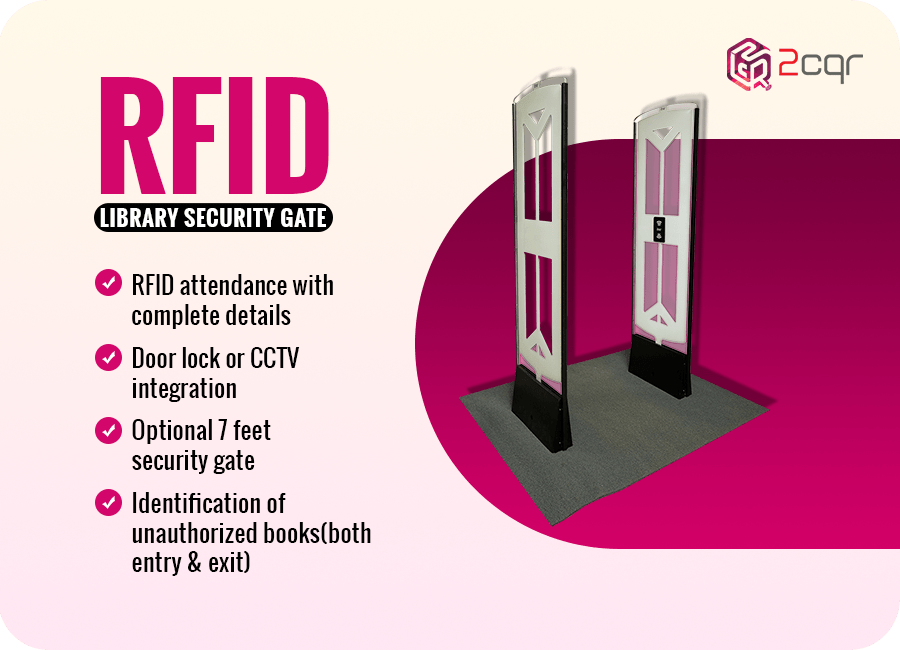
The integration of RFID technology in libraries has become indispensable specially for modern libraries, revolutionizing the way they manage resources and operations. Among the various RFID solutions, RFID HF (High-Frequency) security systems stand out as a wonderful solution to address the primary concern of librarians – the security of valuable resources.
This blog will explore the significant role of RFID HF security systems in boosting efficiency and security in library management.
Restrictions on Unauthorized Entry:
The security of a library is paramount, and unauthorized access can lead to serious consequences. RFID-based HF security systems offer an effective solution by employing facial recognition, biometrics, or access cards to control entry points.
These security gates deny access to unauthorised individuals, ensuring a secure environment for valuable library resources.
Improved User Experience:
RFID HF security systems operate quickly with facial recognition or biometrics, reducing waiting times for library users. The quick authentication process enhances the overall user experience.
However, it is essential to acknowledge potential challenges, such as facial recognition finds difficulties during rainy weather or when users have facial injuries.
Informed Decision-Making:
The data captured by RFID security systems provides valuable insights into library usage patterns such as library administrators can track peak traffic times, frequently accessed areas by patrons and staff, enabling them to make informed decisions regarding collection improvement, inventory checks, and staff allocation.
These data-driven decisions contribute to the overall efficiency of library management and enhance the user experience.
Easy Integration & More Flexibility:
RFID systems can seamlessly integrate with other security devices, including surveillance cameras, intercoms, and alarm systems. This comprehensive security network ensures a robust and efficient security infrastructure, addressing potential challenges without complexities.
Additionally, RFID technology allows easy modification of access permissions without the need for physical keys or access cards, providing flexibility to adapt to changing security requirements.
Avoids the Need for Manual Support:
With a centralised control system, libraries can easily manage multiple security gates without the need for additional resources for real-time monitoring. The automated nature of RFID-based gate control systems minimises the potential for reading errors and security breaches, ensuring smooth and efficient operations.
Conclusion:
Incorporating RFID HF security systems in libraries has become essential for ensuring a secure and efficient environment. These systems restrict unauthorised entry, enhance user experience, enable data-driven decision-making, offer easy integration, and reduce the need for manual intervention.
As libraries strive to evolve and embrace modern technology, RFID HF security systems play a pivotal role in addressing security concerns and improving overall efficiency. By embracing RFID technology, libraries can continue to evolve as inclusive and user-friendly spaces, catering to the diverse needs of their patrons with utmost convenience and security.


